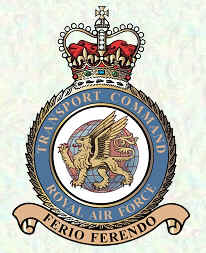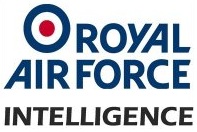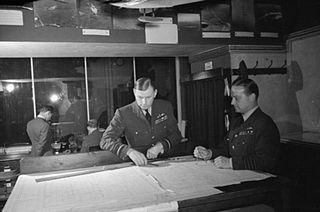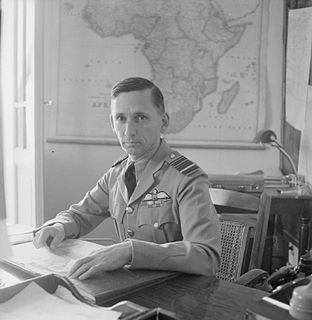
The former Royal Air Force Far East Air Force, more simply known as RAF Far East Air Force, was the Command organisation that controlled all Royal Air Force assets in the east of Asia. It was originally formed as Air Command, South East Asia in 1943 during the Second World War. In 1946, this was renamed RAF Air Command Far East, and finally Far East Air Force in June 1949.

The RAF Second Tactical Air Force (2TAF) was one of three tactical air forces within the Royal Air Force (RAF) during and after the Second World War. It was made up of squadrons and personnel from the RAF, the air forces of the British Commonwealth and exiles from German-occupied Europe. Renamed as British Air Forces of Occupation in 1945, 2TAF was recreated in 1951 and became Royal Air Force Germany in 1959.

RAF Transport Command was a Royal Air Force command that controlled all transport aircraft of the RAF. It was established on 25 March 1943 by the renaming of the RAF Ferry Command, and was subsequently renamed RAF Air Support Command in 1967.
Air vice-marshal (AVM) is a two-star air officer rank which originated in and continues to be used by the Royal Air Force. The rank is also used by the air forces of many countries which have historical British influence and it is sometimes used as the English translation of an equivalent rank in countries which have a non-English air force-specific rank structure. Air vice-marshals may be addressed generically as "air marshal".

RAF Gibraltar is a Royal Air Force station on Gibraltar. No military aircraft are currently stationed there, but RAF, Commonwealth and aircraft of other NATO nations will periodically arrive for transient stopovers, exercises, or other temporary duty. Administered by British Forces Gibraltar, the station is a joint civil-military facility that also functions as the Rock's civilian airport – Gibraltar Airport, with the civilian airport's passenger terminal building and apron facilities located on the north side of the runway while the apron and hangar of RAF Gibraltar are located on the south side of the runway.

The Chief of the Air Staff (CAS) is the professional head of the Royal Air Force and a member of both the Chiefs of Staff Committee and the Air Force Board. The post was created in 1918 with Major General Sir Hugh Trenchard as the first incumbent. The current and 29th Chief of the Air Staff is Air Chief Marshal Sir Stephen Hillier, who succeeded Sir Andrew Pulford in July 2016.

Signals Command was the British Royal Air Force's command responsible for control of signals units from 1958 to 1969. It was based at RAF Medmenham near Marlow, Buckinghamshire.

Marshal of the Royal Air Force Sir Edward Leonard Ellington, was a senior officer in the Royal Air Force. He served in the First World War as a staff officer and then as Director-General of Military Aeronautics and subsequently as Controller-General of Equipment. In the inter-war years he held command positions in the Middle East, in India and then in Iraq. He served as Chief of the Air Staff in the mid-1930s and in that role he implemented a plan, known as 'Scheme F'. This scheme implemented an increase in the size of the Royal Air Force to 187 squadrons within three years to counter the threat from Hitler's Germany. He also broke up the command known as "Air Defence of Great Britain" to create RAF Fighter Command, RAF Bomber Command, RAF Coastal Command and RAF Training Command. He then served as Inspector-General of the RAF until his retirement in 1940.

Intelligence services in the Royal Air Force are delivered by Officers of the Royal Air Force Intelligence Branch and Airmen from the Intelligence Analyst Trade and Intelligence Analyst (Voice) Trade. The specialisation has around 1200 personnel of all ranks posted to operational air stations, HQs and other establishments of the British Armed Forces, both in the United Kingdom and overseas.

Air Chief Marshal Sir Roderic Maxwell Hill, was a senior Royal Air Force commander during the Second World War. He was a former Rector of Imperial College and Vice-Chancellor of London University. The Department of Aeronautics of Imperial College is situated in a building named after him.

Air Vice Marshal Sir Victor Hubert Tait, was a Canadian-born soldier and airman who served with the Royal Canadian Engineers, the Royal Flying Corps, the Royal Air Force, and the Egyptian Air Force. He represented Great Britain at ice hockey in the 1928 Winter Olympics. In later life he was an executive of BOAC.

Air Vice Marshal Sir Geoffrey Rhodes Bromet was a senior Royal Air Force (RAF) officer during the Second World War and Lieutenant Governor of the Isle of Man from 1945 to 1952.
No. 18 Group of the Royal Air Force was a group active from 1918 to 1919, and from 1938 to 1996.
Air Chief Marshal Sir John Barraclough was a Royal Air Force pilot during the Second World War who went on to become Vice-Chief of the Defence Staff.
No. 219 Squadron of the Royal Air Force was founded in 1918 and disbanded in 1957 after four separate periods of service. During the First World War it served as a coastal defence unit, and through most of the Second World War and the 1950s it operated as a night fighter air defence squadron. Three commanders of the squadron went on to be Chiefs of the Air Staff, two of the RAF and one of the Royal Pakistani Air Force.

Middle East Command was a command of the Royal Air Force (RAF) that was active during the Second World War. It had been preceded by RAF Middle East, which was established in 1918 by the redesignation of HQ Royal Flying Corps Middle East that had been activated in 1917 although a small Royal Flying Corps presence had been operational in the region since 1914.
The Air Secretary is the Royal Air Force appointment of which the incumbent is responsible for policy direction on personnel management for members of the RAF. From 1978 to 1983 the Air Secretary was more often referred to as Air Officer Commanding Royal Air Force Personnel Management Centre. It is a senior RAF appointment, held by an officer holding the rank of air vice-marshal. The Air Secretary's counterpart in the British Army is the Military Secretary. The Royal Navy equivalent is the Naval Secretary.
Air Marshal Sir Leslie Dalton-Morris, was a senior Royal Air Force (RAF) commander in the middle of the twentieth century. He played a leading role in the use of signals in the Air Force both during and after the Second World War.
Air Vice Marshal William Edward Theak, was a First World War pilot in the Royal Flying Corps and a senior officer in the Royal Air Force during the Second World War and the post war decade.
Air Vice Marshal Sir Thomas Ulric Curzon Shirley, was a Royal Air Force officer who served as Air Officer Commanding-in-Chief Signals Command from 1964 until 1966.











